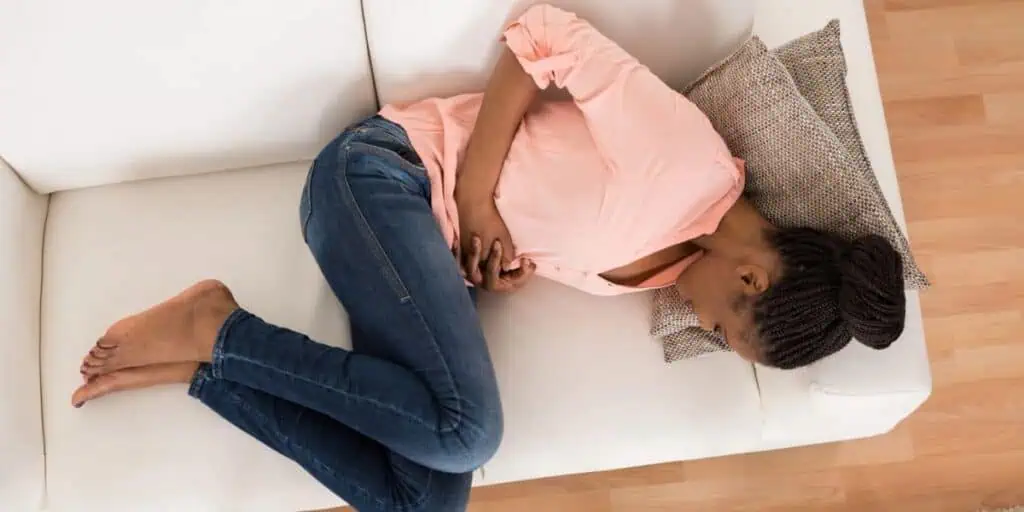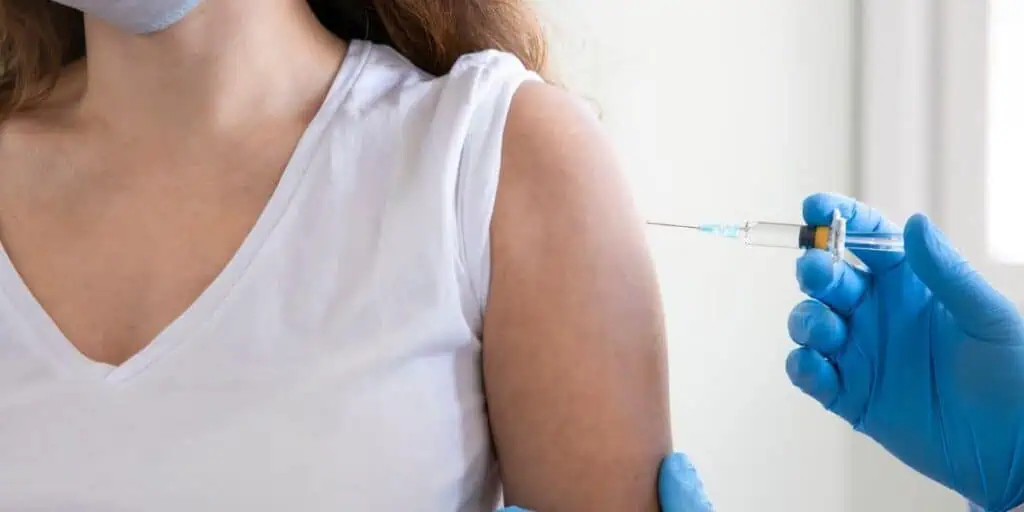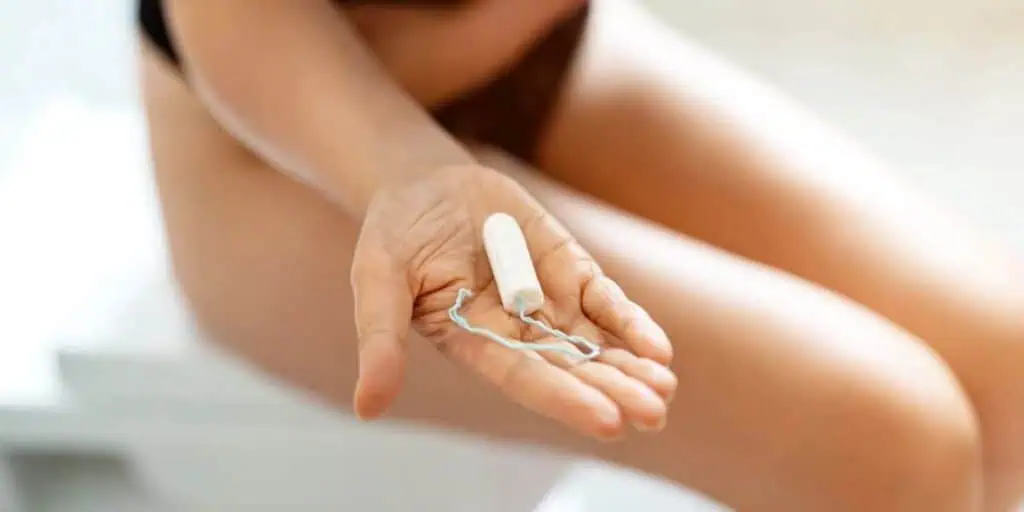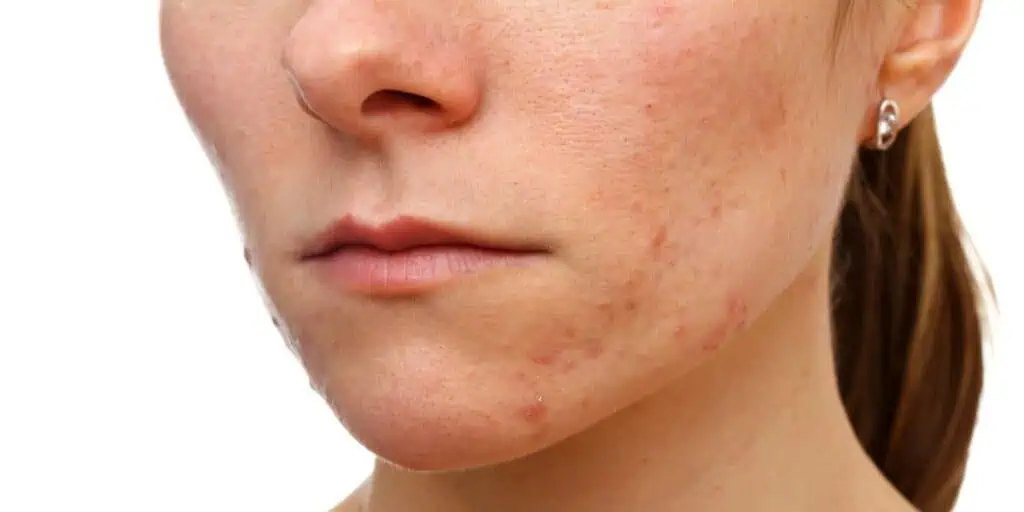Although hair loss is generally considered a male problem, it can also affect women. Women are almost as likely to experience hair thinning or loss as men. It’s thought that at least 50% of women will experience hair loss at some point in their lifetime. Unlike male pattern hair loss, women are more likely to encounter the condition later in life, often after turning 40.
No matter what the cause of hair loss, changes in hair thickness and amount can affect self-esteem and confidence. Knowing how hair grows is important to better understand why women may lose hair as they age.
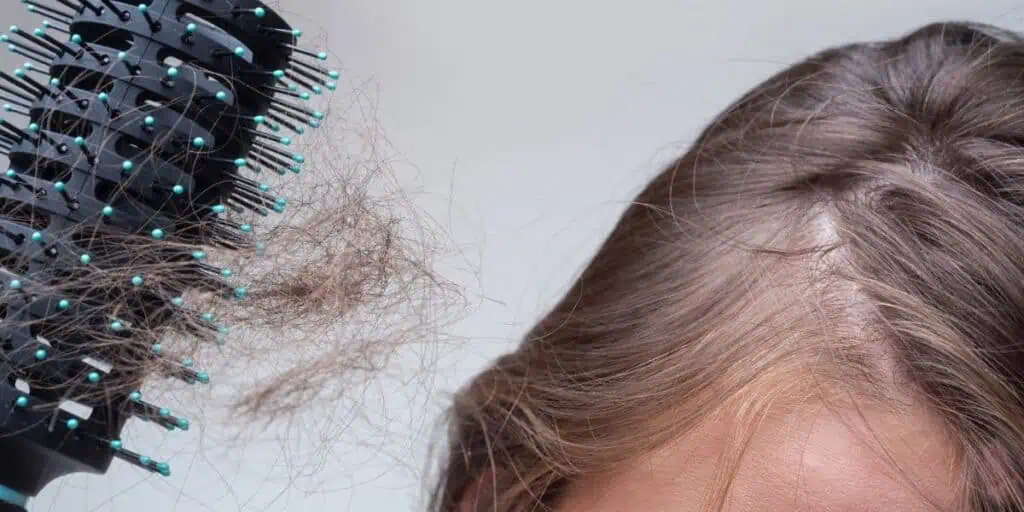
How does hair grow?
Hair goes through four stages during its growing cycle: anagen, catagen, telogen, and exogen. The anagen phase is the growth phase, lasting anywhere from two to eight years. On average, you may see about a half-inch of hair growth each month.
After this, the hair follicles enter the catagen phase, a transitional time during which the follicles begin to shrink. Next, hair moves into the third phase, known as the telogen phase, which is the hair’s resting phase.
The final phase is when natural hair loss occurs. For most women, losing around 60-100 pieces of hair a day is normal as part of the exogen process. Although wearing tight ponytails frequently exacerbates hair loss, it is usually still in the healthy range. In addition to hair care, age, nutrition, a family history of hair loss, and underlying medical conditions can affect how much hair is lost daily.
The entire cycle takes three to five years. But each hair follicle goes through the phase at its own pace, making it unlikely you’ll experience bald patches or dramatic thinning.
What are the signs of hair loss?
If you suffer from abnormal hair loss, you may notice your hair starting to thin out faster than usual. Some women find clumps of hair on their pillows, and some find they are shedding more than usual into their brushes and combs.
While men usually see hair loss as a receding hairline, women tend to experience noticeable hair loss beginning at the top of the head. The incidence of women’s hair loss progressing to baldness or near total baldness is rare. Instead, you may notice your hair’s part widening or bald spots when you put your hair up. This type of hair loss is commonly called female pattern baldness.
What are the causes of women’s hair loss?
Hormones and hair loss are often related. For example, hair loss usually develops after menopause, so naturally, hormonal imbalance may be a contributing factor. However, the reasons for women’s hair loss can vary.
Androgenic alopecia
Androgenic alopecia (hormonal alopecia) is the most common cause of hair loss in women. It is generally described as female-pattern hair loss. It usually occurs after menopause due to an excess of androgens (“male hormones”), such as testosterone and dihydrotestosterone (DHT), also known as the balding hormone. These hormonal excesses are caused by rapidly decreasing estrogen.
Activity in androgen receptors in your hair follicle can also play a role in hair’s natural growth and shedding cycle. When there is high activity in the androgen receptors, your hair’s growth cycle can be shortened, the hair can become thinner, and hair strands may be replaced less often.
In addition to menopause, hormonal fluctuations contributing to androgenetic alopecia in women can be caused by ovarian cysts, high androgen birth control pills, and pregnancy.
Heredity and women’s hair loss
Genetics is another common culprit of hair thinning. Inherited androgenic alopecia (androgenetic alopecia) is more commonly known as male pattern baldness. You are more likely to have the condition if your mother, grandmother, or aunts have thinning hair. Around 30 million American women have androgenetic alopecia.
Androgenetic alopecia usually starts to appear between the ages of 50-70. When thick strands of hair fall out, they are generally replaced by a strand with a hair shaft of the same thickness. With androgenetic alopecia, however, a thinner hair grows in its place. After a few years, the follicle stops growing new hairs, leading to hair thinning and baldness. Therefore, a dermatologist may be able to diagnose androgenetic alopecia early if the scalp has both thick and thin hair follicles.
Other causes of female hair loss
- Pregnancy
- Alopecia areata is a rare autoimmune disorder where the immune system attacks the hair follicles.
- Polycystic Ovary Syndrome (PCOS)
- Significant illness, such as severe infection, high fever, or surgery
- Cicatricial alopecia is an inflammatory condition that destroys hair follicles, leading to permanent baldness.
- Nutrient concerns such as low iron levels or excess vitamin A
- Thyroid disorders
- Psoriasis
- Seborrheic dermatitis
- Dramatic weight loss
- Stress, which can produce a form of temporary hair loss known as Telogen effluvium.
- Medications (such as those used to treat cancer) can cause hair loss as a side effect.
- Traction alopecia, a type of hair loss that occurs when one frequently wears hairstyles that pull the hair too tightly.
What are medical treatments for female hair loss?
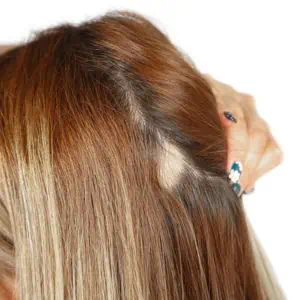
Various treatments are available to help combat hair shedding and thinning. Hair loss diagnosis and treatment are best undertaken with the help of a healthcare professional who can adequately review your risk factors, make a diagnosis, and help you find the best intervention for your specific hair loss.
Options may include:
Medications
Spironolactone, a blood pressure medication, can be used as an antiandrogenic to reduce hair loss. It’s often prescribed for women with androgenetic alopecia. Finasteride, or Propecia, is another off-label medication for hair loss. It helps block DHT.
Topical solutions
Topical solutions often come in sprays, foams, or oils. Rogaine (minoxidil) is a well-known FDA-approved topical cream applied directly to hair loss areas. Most patients find that topical minoxidil solution can slow hair loss, but only about 10-15% report new hair growth. Similarly, topical Finasteride is thought to decrease DHT activity directly at the follicle site, helping promote hair density and slowing hair shedding.
Supplements
Because nutrition plays a role in hair health, supplements such as biotin, iron, and zinc can help curb hair loss. However, women’s hair growth vitamins will not trigger hair regrowth; they only support hair fullness and health.
Surgical treatments
Microneedling can be combined with topical minoxidil application to increase its effectiveness. Platelet-rich plasma (PRP) injections into the scalp can also encourage hair growth. However, a hair transplant is perhaps the most effective way to restore missing or thinning hair.
Hair replacement therapy is a good hair loss treatment for smaller, localized patches of hair loss. A hair transplant takes small pieces of hair-bearing scalp and transplants them to bald patches. In some cases, individual healthy hairs may also be removed and transplanted. Several sessions may be required to reach your desired fullness.
Have questions about your health? Talk to Dr. Aliabadi
Dr. Aliabadi is an expert in minimally invasive gynecological surgery and all aspects of women’s health and well-being, including hair loss due to hormonal changes. Dr. Aliabadi and her caring staff are available to support you through dealing with PCOS, endometriosis, menopause, childbirth, infertility, routine gynecological care, and more.
We invite you to establish care with Dr. Aliabadi. Please make an appointment online or call us at (844) 863-6700.
The practice of Dr. Thais Aliabadi and her Outpatient Hysterectomy Center is conveniently located for patients throughout Southern California and the Los Angeles area. We are near Beverly Hills, West Hollywood, Santa Monica, West Los Angeles, Culver City, Hollywood, Venice, Marina del Rey, Malibu, Manhattan Beach, and Downtown Los Angeles.
Highly trained and honored by the medical community, Dr. Thais Aliabadi is certified by the American Board of Obstetrics and Gynecology and a Diplomat of the American College of Obstetrics and Gynecology. She implements the most advanced, state-of-the-art technology and treatment options.
Women can experience hair thinning at any age, but as menopause and hair loss are commonly associated, many tend to notice hair thinning later in life. Alternatively, female pattern hair loss (FPHL), the most common form of female hair loss, generally begins between the ages of 20 and 40.
Depending on the cause, hormonal hair loss in women might be able to be reversed if the underlying hormonal imbalance is treated. Hormone replacement therapy (HRT) can sometimes be used to treat hair loss related to menopause.
Hormonal hair loss can last for different periods of time, depending on the cause. Postpartum-related hair thinning or loss often resolves within 6 to 9 months, but hair loss related to menopause can last up to 2 years.
Sources
Rathnayake D, et al. (2010). Innovative use of spironolactone as an antiandrogen in the treatment of female pattern hair loss. https://pubmed.ncbi.nlm.nih.gov/20510769/
Hair loss. American Academy of Dermatology. https://www.aad.org/public/diseases/hair-loss/treatment/transplant
Androgenetic Alopecia. https://www.ncbi.nlm.nih.gov/books/NBK430924/






